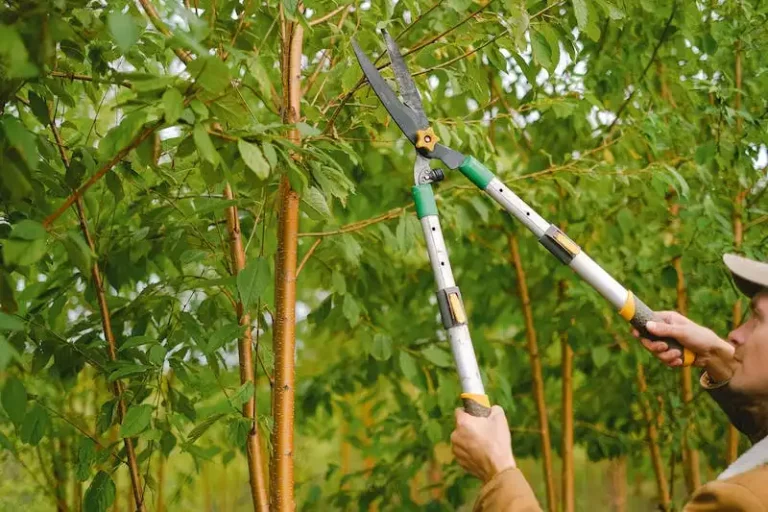If you want to add a touch of romance and beauty to your garden, climbing roses are the perfect choice. Not only do they provide stunning blooms, but they also attract pollinators, making your garden a haven for butterflies and bees.
When it comes to caring for climbing roses, watering is key. Make sure to water them regularly, especially during hot summer months. One popular climbing rose is ‘Eden’, which features beautiful tangerine-colored blooms and can grow up to 7 feet tall. Another option is ‘Altissimo’, which has vibrant red flowers and a vigorous growth habit.
Pruning is another important aspect of maintaining climbing roses. You’ll want to trim them in late winter or early spring to remove any dead or diseased wood. This will help promote new growth and ensure that your climbers look their best throughout the year.
One stunning climbing rose variety is ‘Macdub’, which produces golden blooms that twirl in the afternoon breeze. For a more traditional look, consider ‘Zephirine Drouhin’, a thornless climbing rose with fragrant pink flowers. Another popular choice is ‘Altissimo’, a vigorous climber with bright red blooms that can reach up to 10 feet in height.
In terms of positioning, climbing roses need a sunny spot in your garden with well-drained soil. They can also be trained to grow up walls, trellises, or pergolas. Just make sure to secure them properly to support structures, especially in areas with strong winds.
Climbing roses are known for their abundance of blooms and their ability to add vertical interest to any garden. With proper care and the right growing conditions, these roses can bring beauty and elegance to your outdoor space for years to come.
How to Plant and Grow Climbing Rose
If you want to add a touch of elegance and beauty to your garden, planting climbing roses is the perfect solution. These stunning flowers can twirl their rounded stems around a fence or any other support structure, creating a mesmerizing display of color and fragrance. Here’s a step-by-step guide on how to plant and grow climbing roses:
1. Choose the Right Rose Variety
Before planting a climbing rose, it’s crucial to choose the right variety that suits your garden. Some popular types include the ‘Brunner’s Joseph’s Coat,’ a rose with golden, cup-like blooms, and the ‘Earlybird Blue,’ a repeat-flowering rose with cream and fruity bellflower-shaped flowers. Make sure to select a rose variety that is suitable for your zone and the available space.
2. Pick the Perfect Spot
Climbing roses require plenty of light to thrive, so choose a sunny spot in your garden where they can get at least 6 hours of direct sunlight each day. Make sure the area has well-drained soil that won’t get waterlogged, as excessive moisture can lead to root rot and other diseases.
3. Prepare the Soil
Before planting, prepare the soil by removing any weeds or grass. Loosen the soil using a garden fork or tiller, and add any necessary amendments such as compost or organic matter to improve the soil’s fertility. This will provide a healthy growing environment for your climbing roses.
4. Plant the Climbing Rose
Dig a hole that is wide and deep enough to accommodate the rose’s root ball. Place the rose in the hole, making sure the bud union (the swollen area where the rose was grafted onto the rootstock) is level with or slightly above the soil surface. Backfill the hole with soil and gently firm it around the roots. Water the rose thoroughly to settle the soil.
5. Provide Support
Climbing roses need support to grow and climb, so install a trellis or other support structure near the rose. Carefully train the rose’s flexible stems onto the support, being careful not to force them. Secure the stems loosely with garden twine or plant ties to keep them in place.
6. Water and Care
Water your climbing roses regularly, especially during dry periods. Aim to keep the soil evenly moist, but not waterlogged. Prune your roses in early spring to remove any dead or damaged wood and to shape the plant. Remove any suckers (stems originating from below the bud union) as soon as you notice them. Fertilize your climbing roses with a balanced rose fertilizer according to the package instructions.
Now that you know how to plant and grow climbing roses, it’s time to add these stunning flowers to your garden! With their abundance of blooms and lovely fragrance, climbing roses will surely become a focal point in your garden and fill it with beauty and charm.
Sources: https://www.example.com/climbing-roses-info
Climbing Rose Overview
A climbing rose is a beautifully flowering plant that can add a special touch to any garden. There are many different varieties of climbing roses available, each with its own unique characteristics and colors. Whether you have a cottage-style garden or a more modern landscape, there is a climbing rose that will fit perfectly.
One popular climbing rose variety is the ‘Eden’ rose. This rose has soft pink petals and a lovely fragrance. It is a prolific bloomer, with flowers appearing in clusters throughout the summer. The ‘Eden’ rose is a hardy climber that is resistant to frost, making it an ideal choice for colder climates.
Another stunning climbing rose is the ‘Raspberry Ice’ rose. This rose has beautiful deep pink and white petals that give it a unique and eye-catching look. It is a vigorous climber that can quickly cover a trellis or arbor. The ‘Raspberry Ice’ rose is also highly resistant to diseases and pests, making it a low-maintenance option for gardeners.
If you’re looking for a climbing rose with a golden touch, the ‘Golden Gate’ rose is a great choice. This rose has bright yellow petals that add a splash of color to any garden. It is a strong climber that can reach heights of up to 12 feet. The ‘Golden Gate’ rose is also heat resistant, making it a great option for gardens in warmer climates.
One of the earliest blooming climbing roses is the ‘Brunner’s Mauve’ rose. This rose starts flowering in late spring and continues through the summer. It has beautiful mauve-colored flowers with a strong fragrance. The ‘Brunner’s Mauve’ rose is a vigorous climber that is easy to grow and maintain.
When planting climbing roses, it is important to choose a well-drained location with plenty of sunlight. Roses prefer rich soil, so it is a good idea to amend the ground with compost or other organic matter before planting. Watering and fertilizing instructions may vary depending on the variety, so be sure to read the care instructions for your specific rose.
To train a climbing rose, gardeners can use a trellis, arbor, or other supporting structure. It is important to trim any dead or damaged branches and to periodically remove any suckers that may grow from the base of the rose. Regular pruning will help to keep the rose healthy and promote new growth.
Climbing roses are known for their graceful and showy blooms, and they can be a beautiful addition to any garden. Whether you choose a classic variety like ‘Eden’ or a vibrant option like ‘Raspberry Ice’, a climbing rose is sure to add color and charm to your outdoor space.
So, if you’re a garden lover and want a real show-stopper, consider planting a climbing rose. The stunning flowers, low maintenance, and resistance to pests and diseases make it an ideal choice for any gardener. Whether you go for the golden ‘Golden Gate’ rose or the tangerine ‘Albertine’, these climbers are sure to make your garden look nothing but spectacular.
Where to Plant Climbing Roses
Planting climbing roses requires careful consideration of their growing conditions. Roses, like the variety ‘Golden Showers’ or ‘Peggy Martin’, thrive in full sun and well-drained soil. They can be planted near a wall, fence, or a pergola. You can also train them to climb arbors or over a trellis.
Climbing roses, such as ‘Eden’ or ‘Sombreuil’, are vigorous growers and can reach a height/spread of 3-10 feet. They can be used to create a beautiful cottage-style garden or to add vertical interest to any landscape.
When planting climbing roses, make sure to prepare the soil by digging a hole wide and deep enough to accommodate the roots. Trim any damaged or broken canes, but leave the main cane intact. Place the rose bush in the hole and backfill with soil, making sure to firm the soil around the roots. Water the plant thoroughly after planting.
After planting, watering is crucial for the success of climbing roses. Water deeply and evenly to ensure healthy growth. In hot and dry weather, water the roses more frequently. Apply a balanced rose fertilizer, following the instructions on the product label, to promote strong root development and abundant flowering.
Pruning climbing roses is essential to keep them in shape and promote new growth. Prune in early spring before new shoots appear. Remove any dead or diseased wood, as well as any weak or crossing branches. Trim the rose bush to maintain the desired height/spread and to encourage fuller growth.
Climbing roses, with their long canes and thorns, can be trained to climb structures or trellises. You can use flexible ties or pegs to secure the canes to their support. Some popular companion plants for climbing roses include perennial bellflower, blue dawn viburnum, and ‘America’ clematis. These plants provide additional color and interest to the garden.
In terms of weather conditions, climbing roses are generally hardy in USDA zones 6-9. However, some varieties, like ‘Delany’s Frost Proof’, are more cold-resistant and can tolerate temperatures as low as -30°F. To avoid winter damage, mulch the base of the rose bush to protect the roots.
With their stunning blooms and graceful habit, climbing roses are a beautiful addition to any garden. Whether you plant them near a wall, on a trellis, or as part of a cottage-style landscape, these climbers will make your garden look nothing but spectacular.

